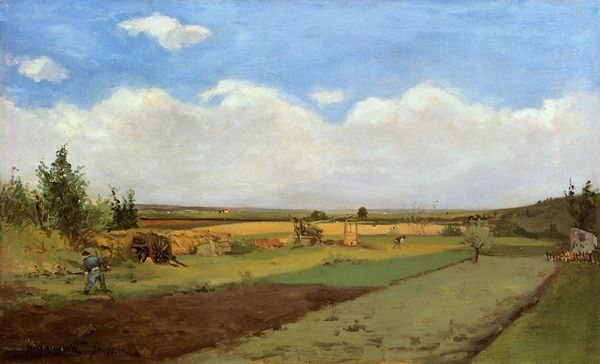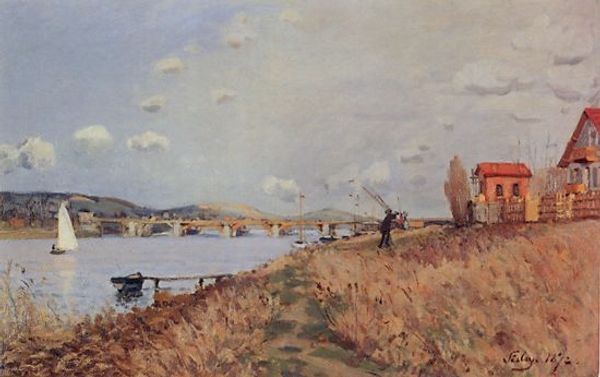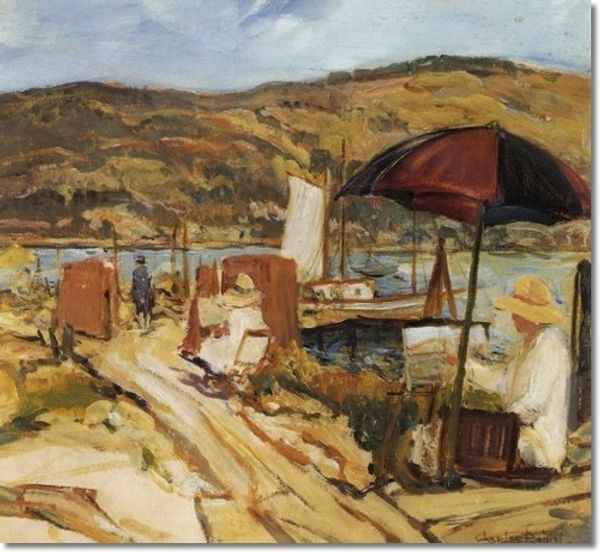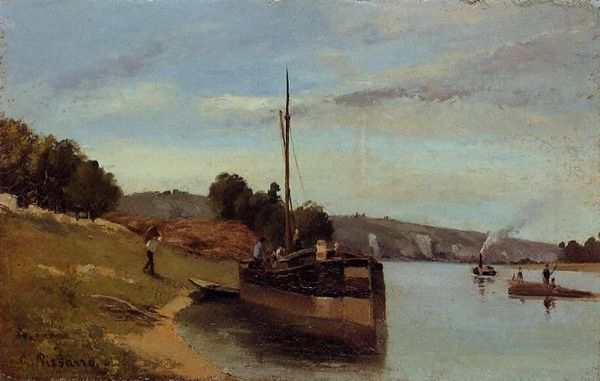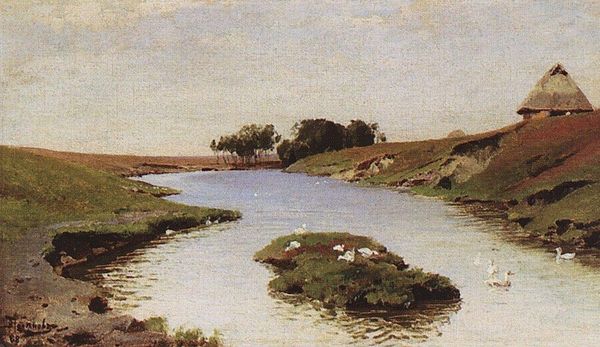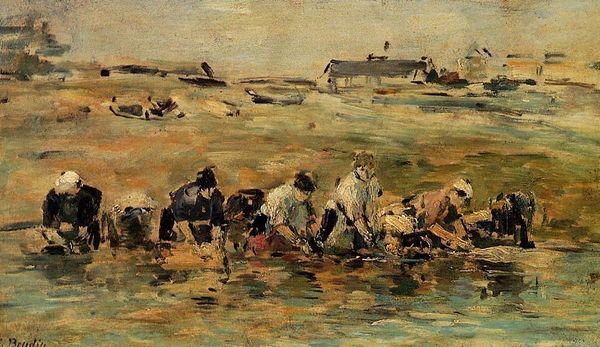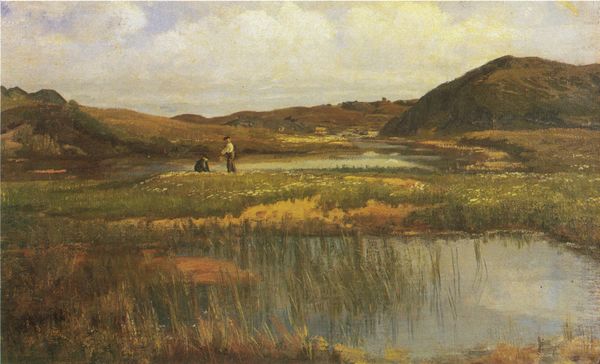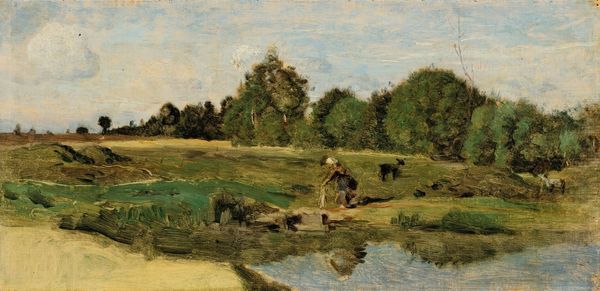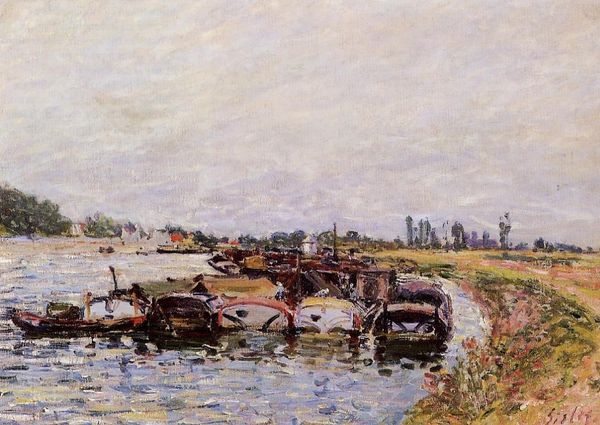
Copyright: Public domain
Curator: This is Jean-Baptiste-Camille Corot’s "Mur (Côtes du Nord)", painted in 1855. What strikes you initially about this work? Editor: The earthiness. It’s rendered in ochres and browns, lending a grounded feeling, the landscape blending seamlessly with the laboring figures. It speaks of hard work. Curator: Note Corot's treatment of light. How would you describe the values? Editor: The sky feels bright, though muted. See how that hazy light falls on the stone walls. What kind of labor are we observing? Curator: Primarily women working and conversing by a stone wall. The artist appears focused on the repetition of form within a narrow range. Observe the geometric interplay of the stone architecture. It stands against the softness of the hills and sky. Editor: The stark reality is the extraction of labor in building the wall, stone upon stone, a collective task of the local inhabitants. What materials and processes can you make out? Curator: The artist employed oil paint, of course, likely “en plein air”, resulting in direct impressions that captured the ephemeral quality of light and atmosphere. The visible brushstrokes contribute significantly to this sensation. Note the structural integrity he achieves with layering and shading. Editor: Yes, the landscape betrays a hierarchy with workers situated at its foundation. I can feel its heavy construction, how Corot renders the sheer bulk of stone moved by these workers, a visual poem about the dignity and struggle inherent in everyday life. Curator: Dignity perhaps through composition. Observe how figures' white bonnets punctuate the landscape to move our eyes around and back through the plane of the canvas. Editor: While celebrating aesthetic qualities, it’s important to understand these structures, which dictate living patterns, and reflect social values concerning utility, resource, and space. Curator: Perhaps. Ultimately, this painting offers us a perspective into 19th century rural life interpreted through form, color, and texture that speaks volumes about artistic choice. Editor: Indeed, from a materialist viewpoint, the landscape exposes how much society shaped both nature and experience.
Comments
No comments
Be the first to comment and join the conversation on the ultimate creative platform.
